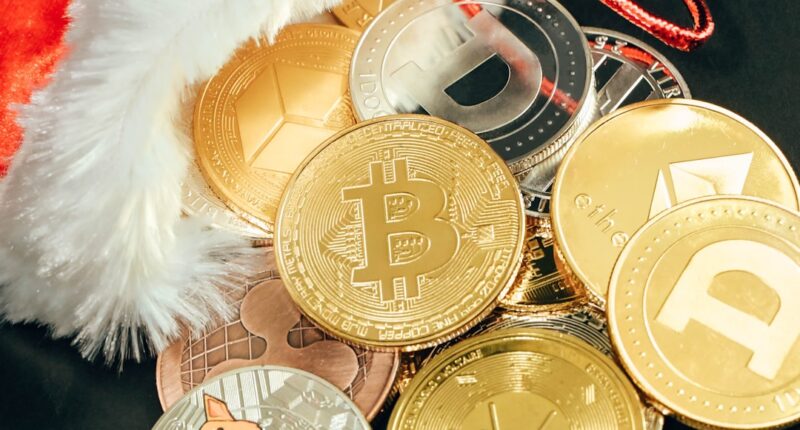Ethereum and Solana are two prominent blockchain platforms that have gained significant attention in the cryptocurrency space. Ethereum, launched in 2015, is known as the pioneer of smart contracts and decentralized applications (dApps). It has established itself as the leading platform for building and deploying decentralized applications, with a large developer community and a robust ecosystem of projects and tokens.
On the other hand, Solana is a relatively new blockchain platform that was launched in 2020. It aims to address some of the scalability issues faced by Ethereum by offering a high-performance blockchain that can handle thousands of transactions per second. Solana has gained popularity for its fast transaction speeds and low fees, attracting developers and users looking for a more scalable alternative to Ethereum.
Comparing Ethereum and Solana is important because both platforms offer unique features and capabilities that can impact their suitability for different use cases. While Ethereum has a proven track record and a wide range of applications, Solana’s scalability and performance make it an attractive option for certain types of projects. Understanding the strengths and weaknesses of each platform can help developers, investors, and users make informed decisions about which platform to choose.
Key Takeaways
- Ethereum and Solana are two popular blockchain platforms with different approaches to scalability and security.
- Ethereum was launched in 2015 and is the second-largest cryptocurrency by market capitalization, while Solana was launched in 2017 and has gained popularity for its high-speed transactions.
- Ethereum has recently announced its transition to a proof-of-stake consensus mechanism, while Solana has attracted investment from major players like Andreessen Horowitz.
- Ethereum’s technology is based on smart contracts and decentralized applications, while Solana uses a unique consensus mechanism called Proof of History.
- Ethereum’s advantages include a large developer community and a wide range of use cases, but it has struggled with high gas fees and slow transaction times. Solana’s advantages include fast transaction speeds and low fees, but it is still a relatively new platform with less developer support.
- Ethereum’s scalability issues have led to the development of layer 2 solutions like Polygon, while Solana’s high-speed transactions have attracted interest from decentralized finance (DeFi) projects.
- The choice between Ethereum and Solana ultimately depends on the specific use case and priorities of the user, as both platforms have their own strengths and weaknesses.
The History of Ethereum and Solana
Ethereum was created by Vitalik Buterin in 2013 with the goal of building a decentralized platform that could support smart contracts. The project gained significant attention and raised funds through an initial coin offering (ICO) in 2014. Ethereum’s mainnet was launched in 2015, marking the beginning of a new era for blockchain technology. Since then, Ethereum has undergone several upgrades and improvements to enhance its functionality and scalability.
Solana, on the other hand, was founded by Anatoly Yakovenko in 2017. Yakovenko, a former engineer at Qualcomm, recognized the need for a highly scalable blockchain platform and set out to build Solana. The project gained traction in 2020 when it raised $20 million in a funding round led by Multicoin Capital and Andreessen Horowitz. Solana’s mainnet was launched in March 2020, and it has since gained popularity for its high-performance blockchain and low transaction fees.
Both Ethereum and Solana have achieved key milestones in their respective journeys. Ethereum’s most significant milestone was the launch of Ethereum 2.0, which aims to transition the platform from a proof-of-work (PoW) consensus mechanism to a more energy-efficient proof-of-stake (PoS) mechanism. This upgrade is expected to address Ethereum’s scalability issues and improve its performance.
Solana, on the other hand, has seen rapid growth in popularity and adoption. It has attracted several high-profile projects and partnerships, including Serum, a decentralized exchange (DEX) built on Solana, and Mango Markets, a decentralized finance (DeFi) platform. Solana’s unique approach to scalability, which combines a proof-of-history (PoH) consensus mechanism with a high-performance blockchain architecture, has positioned it as a promising competitor to Ethereum.
Ethereum’s Recent News and Developments
Ethereum has been making significant progress in recent years to address its scalability issues and improve its functionality. One of the most notable developments is the ongoing transition to Ethereum 2.0, also known as Eth2 or Serenity. This upgrade involves the implementation of several key components, including the Beacon Chain, shard chains, and the merge of the Ethereum mainnet with the Beacon Chain.
The Beacon Chain, which was launched in December 2020, serves as the backbone of Ethereum 2.0 and introduces the PoS consensus mechanism. This transition from PoW to PoS is expected to significantly improve Ethereum’s scalability by allowing for more transactions to be processed in parallel. It also reduces the energy consumption associated with mining, making Ethereum more environmentally friendly.
Another significant development in the Ethereum ecosystem is the rise of non-fungible tokens (NFTs). NFTs are unique digital assets that can represent ownership of artwork, collectibles, and other digital items. Ethereum’s smart contract capabilities and established ecosystem have made it the platform of choice for NFT projects. The popularity of NFTs has surged in recent months, with high-profile sales and collaborations attracting mainstream attention to the Ethereum network.
Solana’s Recent News and Developments
| Date | News/Development |
|---|---|
| August 31, 2021 | Solana’s native token, SOL, reached an all-time high of 100.55. |
| September 1, 2021 | Solana announced the launch of the Solana Season Hackathon, a global hackathon aimed at accelerating the development of decentralized applications on the Solana blockchain. |
| September 7, 2021 | Solana announced a partnership with Chainlink to integrate Chainlink’s decentralized oracle network into the Solana blockchain, enabling developers to access off-chain data and resources. |
| September 9, 2021 | Solana announced the launch of Wormhole, a cross-chain bridge that allows users to transfer assets between Solana and other blockchains, including Ethereum and Binance Smart Chain. |
| September 14, 2021 | Solana announced a partnership with Serum, a decentralized exchange built on the Solana blockchain, to launch a new decentralized finance (DeFi) platform called Mango Markets. |
Solana has experienced rapid growth and adoption since its launch in 2020. The platform has attracted a number of high-profile projects and partnerships, positioning itself as a serious competitor to Ethereum. One of the key factors driving Solana’s popularity is its high scalability and fast transaction speeds.
Solana’s unique approach to scalability is based on its proof-of-history (PoH) consensus mechanism. PoH provides a verifiable record of historical events on the blockchain, allowing for efficient parallel processing of transactions. This enables Solana to handle thousands of transactions per second, making it one of the fastest blockchain platforms in the industry.
In addition to its scalability, Solana has also gained attention for its low transaction fees. The platform’s low fees make it an attractive option for developers and users looking to build and interact with decentralized applications without incurring high costs. This has contributed to Solana’s growing ecosystem, with a number of DeFi projects, NFT platforms, and gaming applications being built on the platform.
Solana has also formed several partnerships and collaborations to further enhance its ecosystem. For example, Solana has partnered with Chainlink, a leading decentralized oracle network, to bring secure and reliable data feeds to Solana-based applications. This integration allows developers to access real-world data on the blockchain, enabling the creation of more complex and sophisticated decentralized applications.
Comparing Ethereum and Solana’s Technology
Ethereum and Solana have different approaches to their technology and architecture, which impact their scalability, performance, and functionality.
Ethereum is built on a virtual machine called the Ethereum Virtual Machine (EVM), which allows developers to write and execute smart contracts. The EVM is Turing complete, meaning it can perform any computation that can be expressed algorithmically. This flexibility has made Ethereum the platform of choice for developers looking to build decentralized applications and deploy smart contracts.
Solana, on the other hand, uses a unique architecture that combines a proof-of-history (PoH) consensus mechanism with a high-performance blockchain. The PoH mechanism provides a verifiable record of historical events on the blockchain, allowing for efficient parallel processing of transactions. This enables Solana to achieve high scalability and fast transaction speeds.
One key difference between Ethereum and Solana is their approach to consensus mechanisms. Ethereum currently uses a proof-of-work (PoW) consensus mechanism, which requires miners to solve complex mathematical problems to validate transactions and add them to the blockchain. This process is energy-intensive and limits Ethereum’s scalability. However, Ethereum is in the process of transitioning to a proof-of-stake (PoS) consensus mechanism with the launch of Ethereum 2.0. PoS allows users to “stake” their tokens as collateral to secure the network and validate transactions, reducing the energy consumption associated with mining.
Solana’s PoH consensus mechanism is designed to provide a verifiable record of historical events on the blockchain. This allows for efficient parallel processing of transactions, enabling Solana to achieve high scalability and fast transaction speeds. Solana’s architecture also includes a unique feature called Tower BFT, which provides finality for transactions and ensures that they cannot be reversed or modified once they are confirmed.
Ethereum’s Advantages and Disadvantages

Ethereum has several advantages that have contributed to its success as the leading blockchain platform for decentralized applications.
One of the key advantages of Ethereum is its large developer community and established ecosystem. Ethereum has a vibrant and active community of developers who contribute to the platform’s development and build a wide range of applications and projects. This large developer community has resulted in a robust ecosystem of tools, libraries, and frameworks that make it easier for developers to build on Ethereum.
Another advantage of Ethereum is its established track record and proven functionality. Ethereum has been in operation since 2015 and has undergone several upgrades and improvements to enhance its functionality and address its scalability issues. This track record gives Ethereum a level of credibility and trust that is important for developers and users looking to build and interact with decentralized applications.
However, Ethereum also has some disadvantages that have become more apparent as the platform has grown in popularity. One of the main disadvantages is its scalability issues. Ethereum’s current PoW consensus mechanism limits its transaction throughput, resulting in high fees and slow transaction speeds during periods of high demand. This scalability issue has become more pronounced with the rise of DeFi and NFTs, which have put significant strain on the Ethereum network.
Another disadvantage of Ethereum is its high gas fees. Gas fees are the fees paid by users to execute transactions and interact with smart contracts on the Ethereum network. During periods of high demand, gas fees can become prohibitively expensive, making it difficult for small-scale users to participate in the Ethereum ecosystem. This high cost of transactions has led to a search for alternative platforms that offer lower fees and better scalability.
Solana’s Advantages and Disadvantages
Solana offers several advantages that have contributed to its rapid growth and adoption in the cryptocurrency space.
One of the main advantages of Solana is its high scalability. Solana’s unique architecture, which combines a proof-of-history (PoH) consensus mechanism with a high-performance blockchain, allows it to handle thousands of transactions per second. This high scalability makes Solana an attractive option for developers and users looking for a platform that can support high-throughput applications.
Another advantage of Solana is its low transaction fees. Solana’s low fees make it an attractive option for developers and users looking to build and interact with decentralized applications without incurring high costs. This has contributed to the growth of Solana’s ecosystem, with a number of DeFi projects, NFT platforms, and gaming applications being built on the platform.
However, Solana also has some disadvantages that should be considered. One of the main disadvantages is its relative newness compared to Ethereum. While Ethereum has been in operation since 2015 and has a proven track record, Solana is a relatively new platform that was launched in 2020. This means that Solana may not have the same level of credibility and trust as Ethereum, which could impact its adoption and usage.
Another disadvantage of Solana is its smaller developer community compared to Ethereum. Ethereum has a large and active developer community that contributes to the platform’s development and builds a wide range of applications and projects. While Solana has been gaining traction and attracting developers, it may take time for its developer community to reach the same level as Ethereum’s.
Ethereum vs Solana: Which One is More Scalable?
Scalability is one of the key factors to consider when comparing Ethereum and Solana. Both platforms have taken different approaches to address scalability issues and improve their transaction throughput.
Ethereum’s scalability solutions primarily revolve around the ongoing transition to Ethereum 2.0. The introduction of shard chains in Ethereum 2.0 allows for parallel processing of transactions, significantly increasing the network’s capacity. Sharding divides the network into smaller pieces called shards, each capable of processing its own transactions. This allows for more transactions to be processed in parallel, increasing the overall throughput of the network.
In addition to sharding, Ethereum also utilizes layer 2 solutions to further enhance scalability. Layer 2 solutions are protocols built on top of the Ethereum mainnet that offload some of the transaction processing to sidechains or other off-chain networks. These layer 2 solutions can significantly increase the transaction throughput of the Ethereum network while reducing the load on the mainnet.
Solana’s scalability is achieved through its unique architecture and consensus mechanism. The proof-of-history (PoH) mechanism provides a verifiable record of historical events on the blockchain, allowing for efficient parallel processing of transactions. This, combined with Solana’s high-performance blockchain, enables the platform to handle thousands of transactions per second.
Solana’s architecture also includes a feature called Tower BFT, which provides finality for transactions. Finality ensures that once a transaction is confirmed, it cannot be reversed or modified. This feature eliminates the need for multiple confirmations and reduces the time required for transactions to be considered final.
In terms of scalability, both Ethereum and Solana offer significant improvements over traditional blockchain platforms. However, Solana’s unique architecture and high-performance blockchain give it an edge in terms of transaction throughput and scalability. Solana’s ability to handle thousands of transactions per second makes it a more scalable option for applications that require high throughput and fast transaction speeds.
Ethereum vs Solana: Which One is More Secure?
Security is another important factor to consider when comparing Ethereum and Solana. Both platforms have implemented various security measures to protect against attacks and ensure the integrity of their networks.
Ethereum has implemented several security measures to protect its network and users. One of the key measures is its bug bounty program, which rewards developers for identifying and reporting vulnerabilities in the Ethereum codebase. This program incentivizes security researchers to actively search for vulnerabilities and helps ensure that any issues are addressed promptly.
Ethereum also undergoes regular security audits by independent third-party firms. These audits review the codebase and identify any potential vulnerabilities or weaknesses. The results of these audits are made public, allowing the community to review and verify the security of the Ethereum network.
Solana has also implemented various security measures to protect its network. One of the key measures is its use of hardware security modules (HSMs) to secure the private keys used to sign transactions. HSMs are physical devices that provide secure storage and management of cryptographic keys. By using HSMs, Solana ensures that the private keys used to sign transactions are protected from unauthorized access.
Solana has also formed partnerships with leading security firms to further enhance the security of its network. These partnerships involve regular security audits and penetration testing to identify any potential vulnerabilities or weaknesses in the Solana codebase. This proactive approach to security helps ensure that any issues are addressed promptly and that the Solana network remains secure.
In terms of security, both Ethereum and Solana have implemented various measures to protect their networks and users. Ethereum’s bug bounty program and regular security audits help ensure the integrity of its codebase, while Solana’s use of HSMs and partnerships with security firms provide additional layers of protection. Both platforms have a strong focus on security, making them relatively secure options for building and deploying decentralized applications.
Ethereum or Solana?
In conclusion, Ethereum and Solana are two prominent blockchain platforms that offer unique features and capabilities. Ethereum, with its large developer community and established ecosystem, has established itself as the leading platform for building and deploying decentralized applications. It has a proven track record and a wide range of use cases, making it a reliable choice for developers and businesses. However, Ethereum’s scalability issues and high transaction fees have become significant challenges that need to be addressed.
On the other hand, Solana offers a highly scalable and fast blockchain platform that can handle thousands of transactions per second. Its unique consensus mechanism and innovative architecture make it a promising contender in the blockchain space. Solana’s low transaction fees and high throughput make it an attractive option for developers looking to build scalable applications.
Ultimately, the choice between Ethereum and Solana depends on the specific needs and requirements of the project. If scalability and low transaction fees are crucial, Solana may be the better choice. However, if an established ecosystem and a wide range of developer tools are important, Ethereum may be the preferred option.
Both platforms have their strengths and weaknesses, and it is essential to carefully evaluate these factors before making a decision. As the blockchain industry continues to evolve, it is likely that both Ethereum and Solana will play significant roles in shaping the future of decentralized applications.
If you’re interested in learning more about the ongoing debate between Ethereum and Solana, you might find this article from ETH News intriguing. Titled “Hello World: Understanding the Key Differences Between Ethereum and Solana,” it delves into the distinct features and functionalities of both blockchain platforms. This comprehensive analysis provides valuable insights for investors, developers, and enthusiasts alike. To read the full article, click here.
FAQs
What is Ethereum?
Ethereum is a decentralized blockchain platform that enables developers to build and deploy decentralized applications (dApps) and smart contracts.
What is Solana?
Solana is a high-performance blockchain platform that aims to provide fast and low-cost transactions for decentralized applications.
What are the key differences between Ethereum and Solana?
One of the key differences between Ethereum and Solana is their approach to scalability. While Ethereum is currently facing scalability issues due to its limited transaction processing capacity, Solana claims to be able to handle up to 65,000 transactions per second. Additionally, Solana uses a unique consensus mechanism called Proof of History, which is designed to improve the efficiency and speed of transaction processing.
Which platform is better for developers?
Both Ethereum and Solana have their own strengths and weaknesses when it comes to developer experience. Ethereum has a larger developer community and a more established ecosystem of tools and resources, while Solana is a newer platform that is still growing its developer community. Ultimately, the choice between the two platforms will depend on the specific needs and goals of the developer.
Which platform has a larger user base?
As of now, Ethereum has a larger user base than Solana. Ethereum has been around for much longer and has a more established ecosystem of dApps and users. However, Solana is growing rapidly and has the potential to attract a large user base in the future.
Which platform is more secure?
Both Ethereum and Solana are designed to be secure, but they use different approaches to achieve security. Ethereum uses a Proof of Work consensus mechanism, which is considered to be secure but energy-intensive. Solana uses a Proof of History consensus mechanism, which is designed to be more efficient and secure. Ultimately, the security of a blockchain platform depends on a variety of factors, including the strength of its consensus mechanism, the quality of its code, and the diligence of its developers and users.





